Metric Conversion - Definition, Examples, Quiz, FAQ, Trivia
Learn to convert between metric units with easy explanations, conversion charts, and practice activities
What is a Metric Conversion Chart?
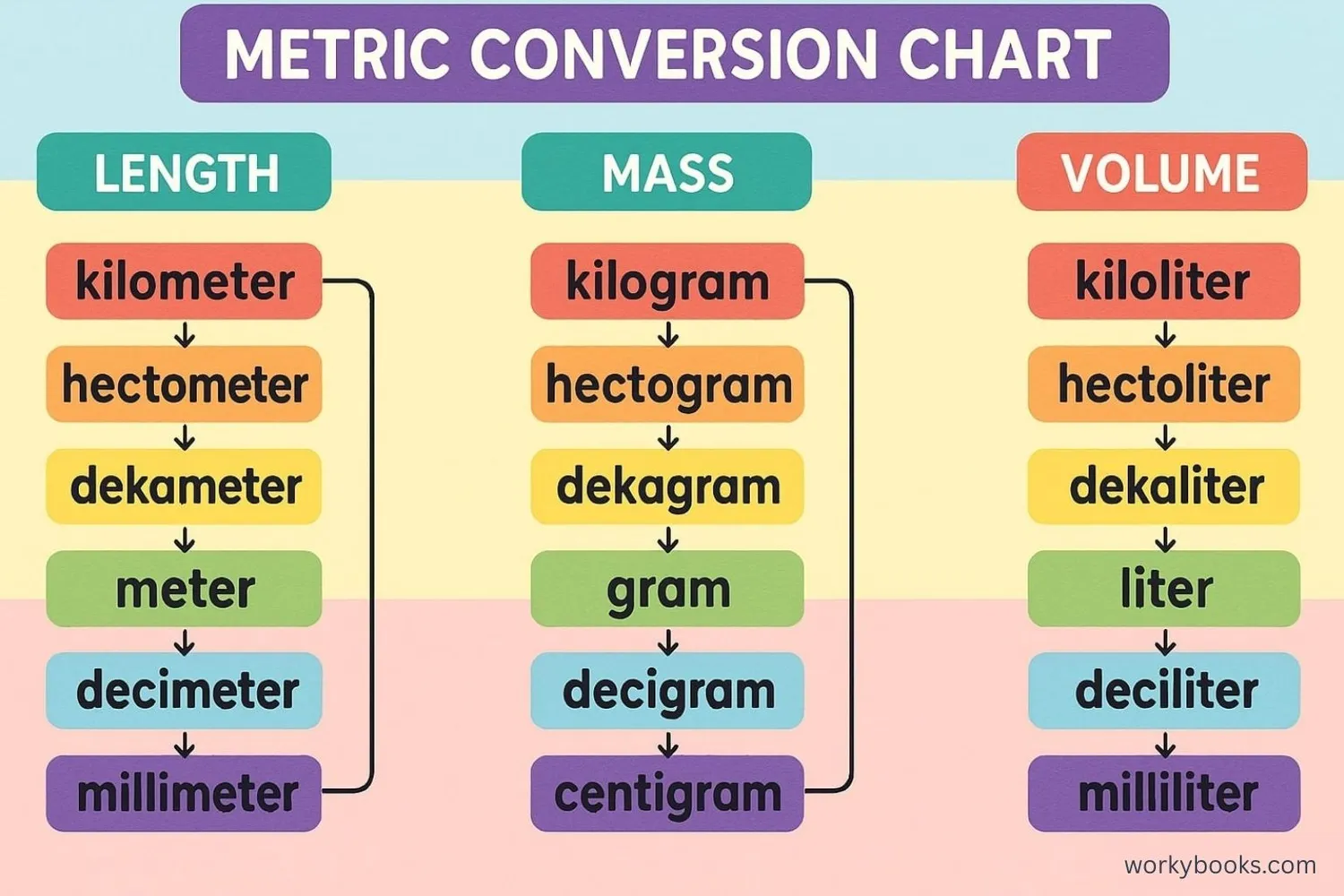
A metric conversion chart is a visual tool that helps us convert between different units in the metric system. The metric system is used all around the world for scientific measurements and in most countries for everyday use.
The metric system is based on units of 10, which makes converting between units much easier than other measurement systems. With a conversion chart, you can quickly see how many smaller units make up a larger unit, or vice versa.
The three main types of measurement in the metric system are:
Length - measured in meters and related units
Mass - measured in grams and related units
Volume - measured in liters and related units
Key Concept
The metric system uses a base-10 system, which means converting between units involves multiplying or dividing by 10, 100, 1000, etc.
Length Conversion in the Metric System
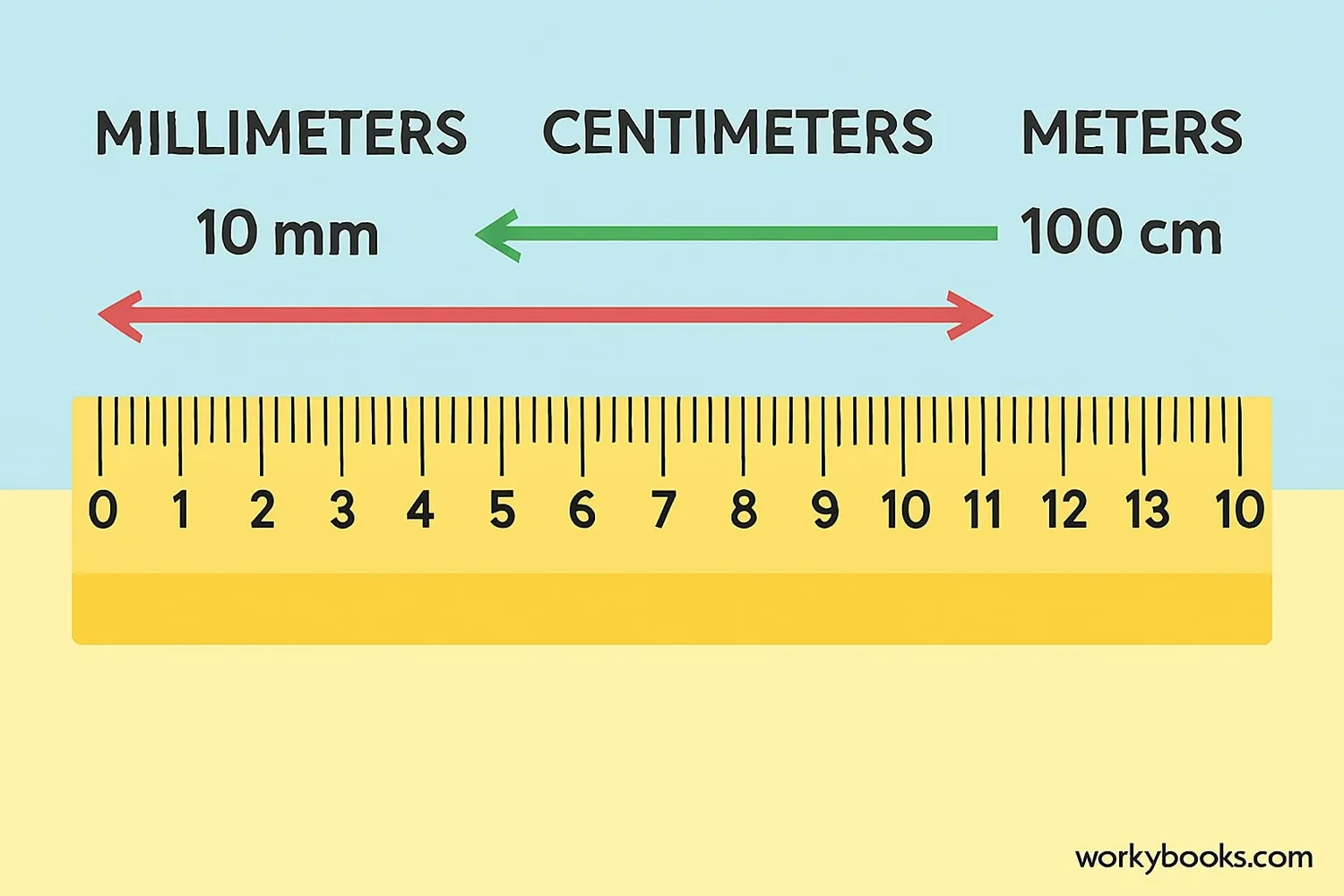
Length is the measurement of how long something is. In the metric system, the basic unit of length is the meter (m). Here are the common metric units for length:
Millimeter (mm) - 1/1000 of a meter (very small)
Centimeter (cm) - 1/100 of a meter (about the width of a fingernail)
Meter (m) - the basic unit of length (about the length of a guitar)
Kilometer (km) - 1000 meters (about 10 city blocks)
To convert between these units, we multiply or divide by powers of 10:
Length Conversion Factors
Metric Length Conversion Chart
| Kilometers (km) | Meters (m) | Centimeters (cm) | Millimeters (mm) |
|---|---|---|---|
| 1 km | 1000 m | 100,000 cm | 1,000,000 mm |
| 0.5 km | 500 m | 50,000 cm | 500,000 mm |
| 0.1 km | 100 m | 10,000 cm | 100,000 mm |
| 0.01 km | 10 m | 1000 cm | 10,000 mm |
| 0.001 km | 1 m | 100 cm | 1000 mm |
Remember
When converting to a larger unit, divide. When converting to a smaller unit, multiply.
Mass Conversion in the Metric System
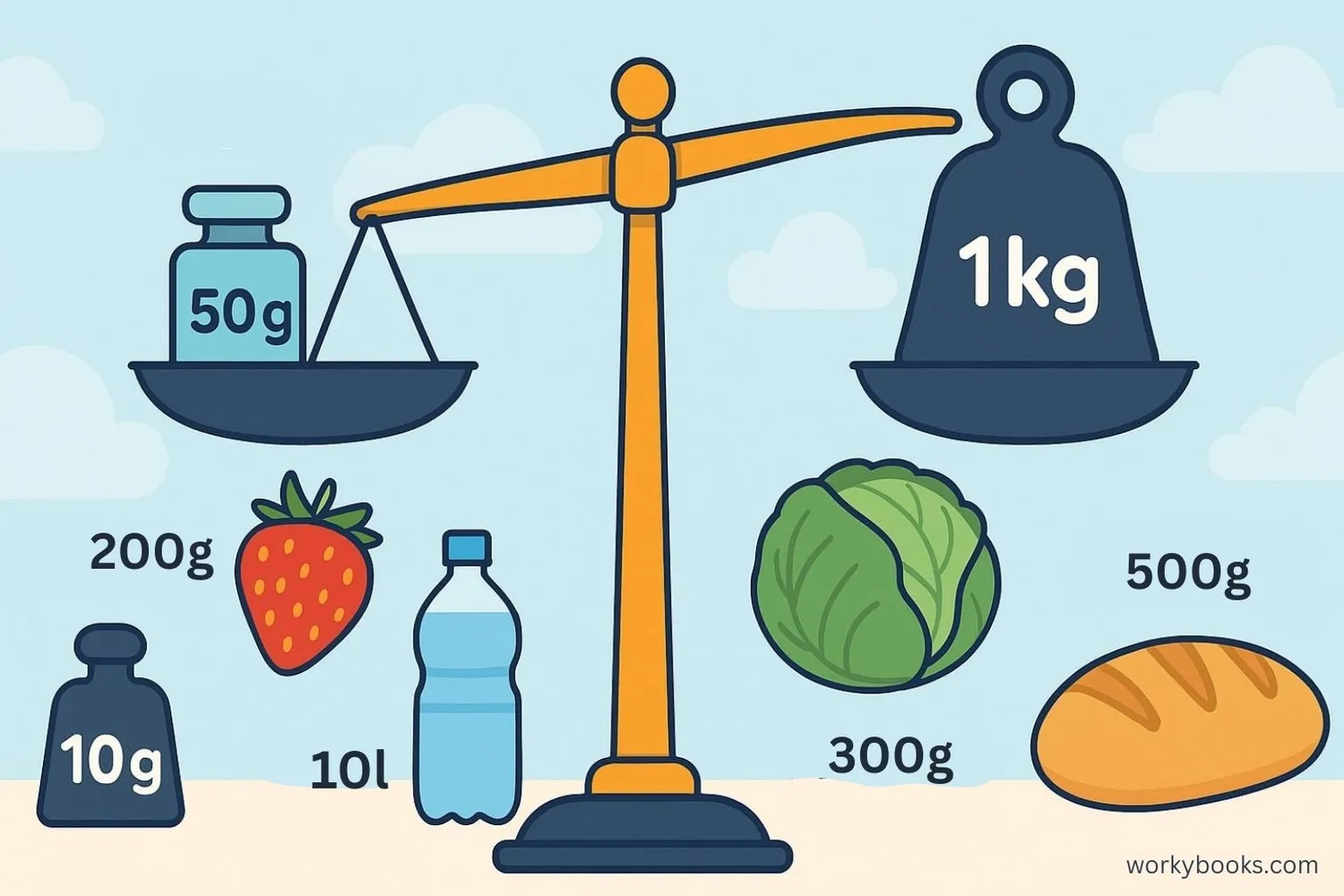
Mass is the measurement of how much matter is in an object. In the metric system, the basic unit of mass is the gram (g). Here are the common metric units for mass:
Milligram (mg) - 1/1000 of a gram (very light, like a grain of sand)
Gram (g) - the basic unit of mass (about the weight of a paperclip)
Kilogram (kg) - 1000 grams (about the weight of a textbook)
Metric ton (t) - 1000 kilograms (about the weight of a small car)
To convert between these units, we use these relationships:
Mass Conversion Factors
Metric Mass Conversion Chart
| Metric Tons (t) | Kilograms (kg) | Grams (g) | Milligrams (mg) |
|---|---|---|---|
| 1 t | 1000 kg | 1,000,000 g | 1,000,000,000 mg |
| 0.5 t | 500 kg | 500,000 g | 500,000,000 mg |
| 0.1 t | 100 kg | 100,000 g | 100,000,000 mg |
| 0.01 t | 10 kg | 10,000 g | 10,000,000 mg |
| 0.001 t | 1 kg | 1000 g | 1,000,000 mg |
Remember
Mass measures how much matter is in an object, while weight measures the force of gravity on that object. In space, objects have mass but no weight!
Volume Conversion in the Metric System
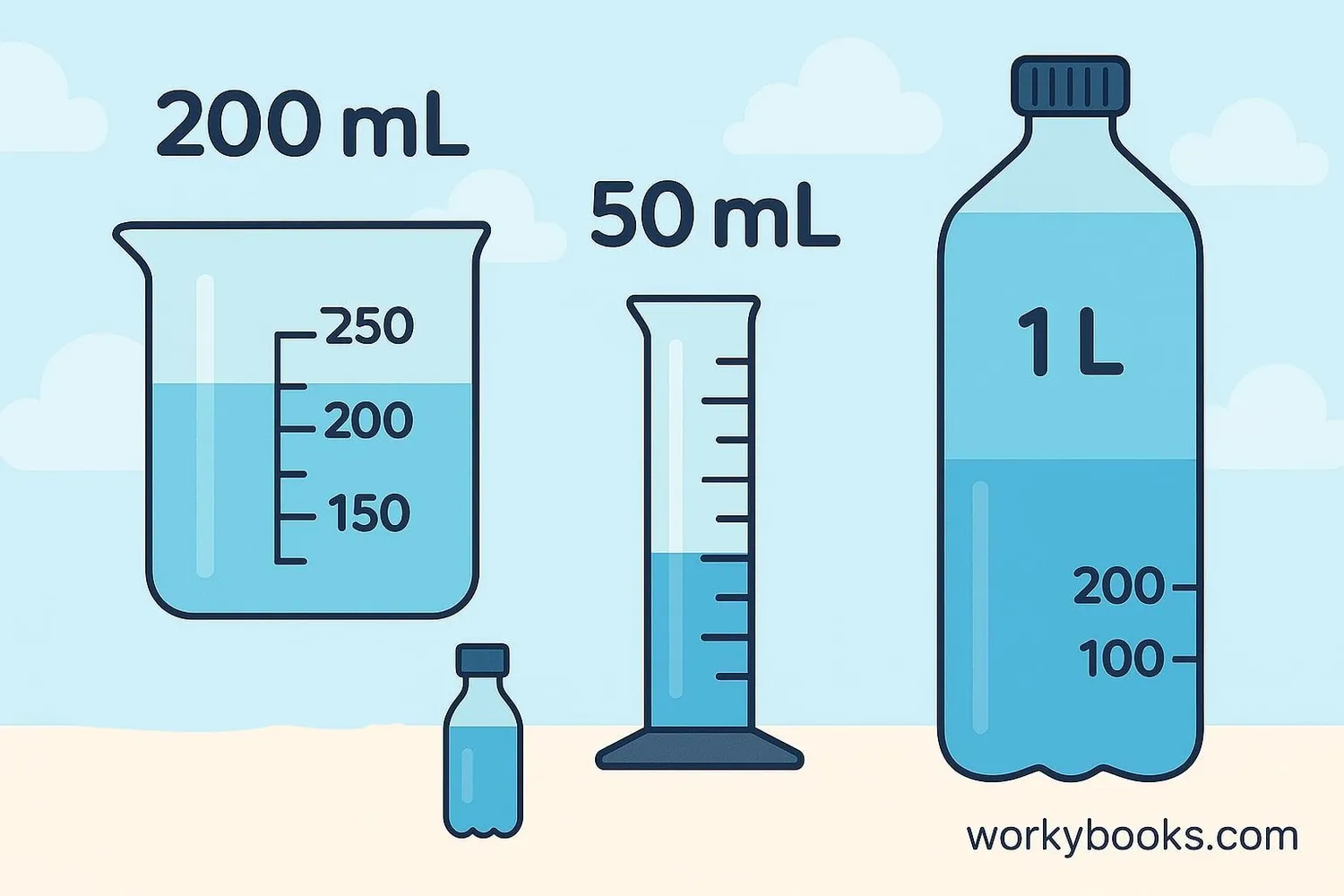
Volume is the measurement of how much space something takes up. In the metric system, the basic unit of volume is the liter (L). Here are the common metric units for volume:
Milliliter (mL) - 1/1000 of a liter (about 20 drops of water)
Centiliter (cL) - 1/100 of a liter (not commonly used)
Liter (L) - the basic unit of volume (about a quart of milk)
Kiloliter (kL) - 1000 liters (about the volume of a small swimming pool)
To convert between these units, we use these relationships:
Volume Conversion Factors
Metric Volume Conversion Chart
| Kiloliters (kL) | Liters (L) | Milliliters (mL) |
|---|---|---|
| 1 kL | 1000 L | 1,000,000 mL |
| 0.5 kL | 500 L | 500,000 mL |
| 0.1 kL | 100 L | 100,000 mL |
| 0.01 kL | 10 L | 10,000 mL |
| 0.001 kL | 1 L | 1000 mL |
Remember
1 milliliter (mL) is exactly equal to 1 cubic centimeter (cm³). This is helpful when measuring the volume of small objects.
Metric Prefixes
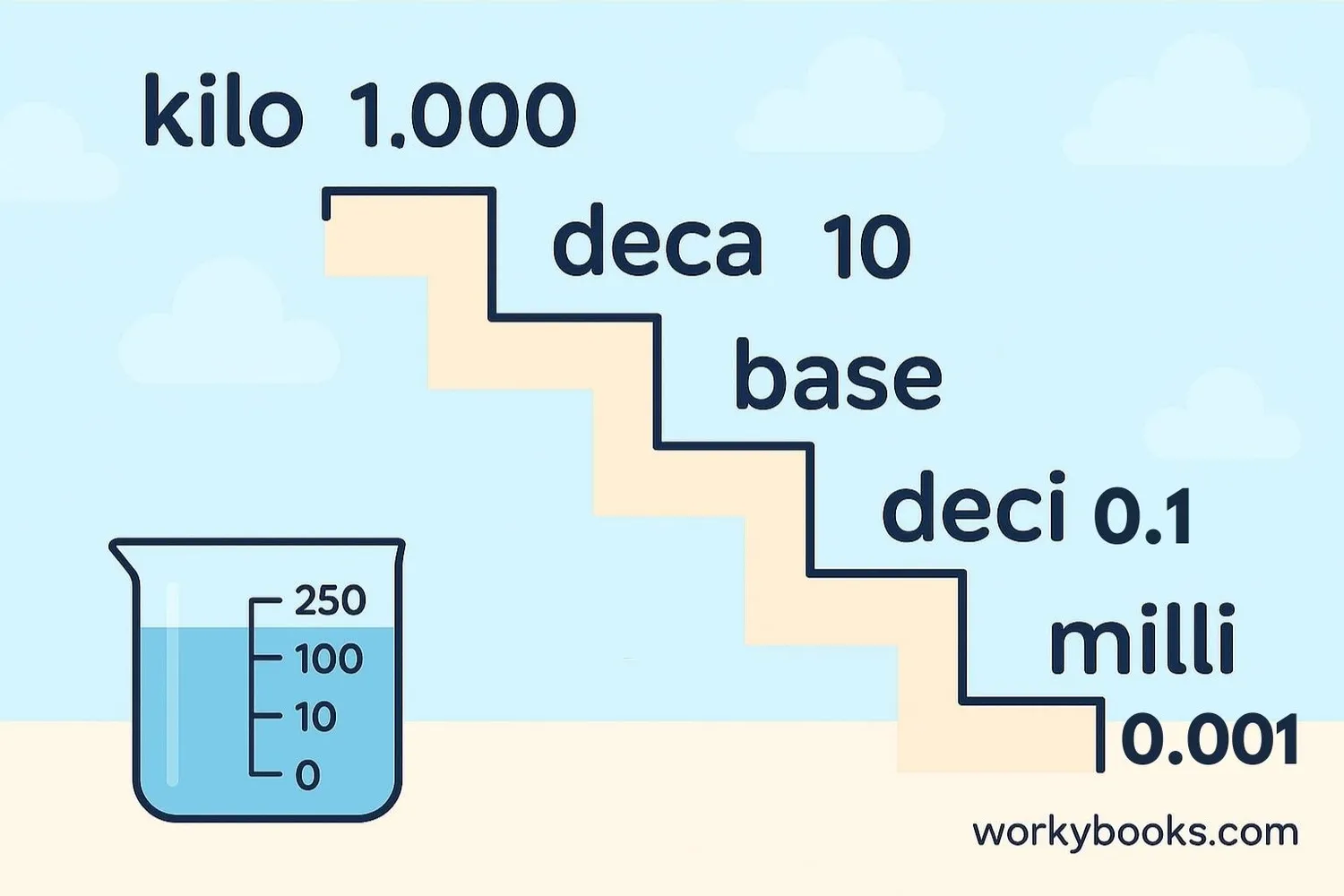
Metric prefixes are added to the base units (meter, gram, liter) to show larger or smaller amounts. These prefixes are based on powers of 10, which makes the metric system very logical and easy to use.
Here are the most common metric prefixes:
| Prefix | Symbol | Meaning | Example |
|---|---|---|---|
| Kilo- | k | 1000 × base unit | 1 kilometer = 1000 meters |
| Hecto- | h | 100 × base unit | 1 hectogram = 100 grams |
| Deca- | da | 10 × base unit | 1 decaliter = 10 liters |
| Base unit | m, g, L | 1 × base unit | 1 meter, 1 gram, 1 liter |
| Deci- | d | 1/10 of base unit | 1 decimeter = 0.1 meters |
| Centi- | c | 1/100 of base unit | 1 centigram = 0.01 grams |
| Milli- | m | 1/1000 of base unit | 1 milliliter = 0.001 liters |
To remember the order of metric prefixes, you can use this memory aid:
King Henry Doesn't Usually Drink Chocolate Milk
This stands for: Kilo, Hecto, Deca, Unit, Deci, Centi, Milli
Each step to the right means multiplying by 10, and each step to the left means dividing by 10 (or multiplying by 0.1).
Remember
The metric system is used by over 95% of the world's population. Only the United States, Liberia, and Myanmar have not officially adopted it as their primary system.
Metric Conversion Practice Quiz
Test your conversion skills with this 5-question quiz. Choose the correct answer for each question.
Frequently Asked Questions
Here are answers to common questions about metric conversion:
Measurement Trivia
Discover interesting facts about the metric system and measurement:
Origin of the Metric System
The metric system was created in France during the French Revolution in the 1790s. Scientists wanted a universal, logical system of measurement that could be used worldwide.
Global Standard
Over 95% of the world's population uses the metric system in daily life. Only the United States, Liberia, and Myanmar have not officially adopted the metric system as their primary system.
Space Measurement
NASA uses metric measurements for all its space missions. The Mars Climate Orbiter was lost in 1999 because one engineering team used metric units while another used imperial units for calculations.
Tallest Mountain
Mount Everest is 8,848 meters tall. That's equivalent to 8.848 kilometers or 884,800 centimeters!


